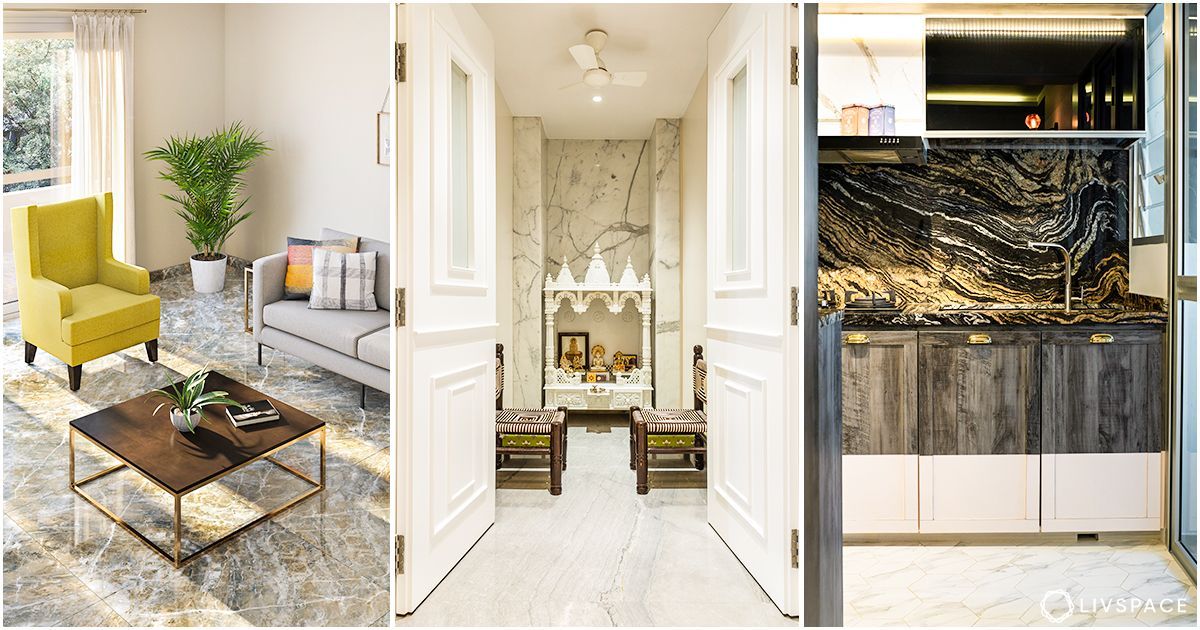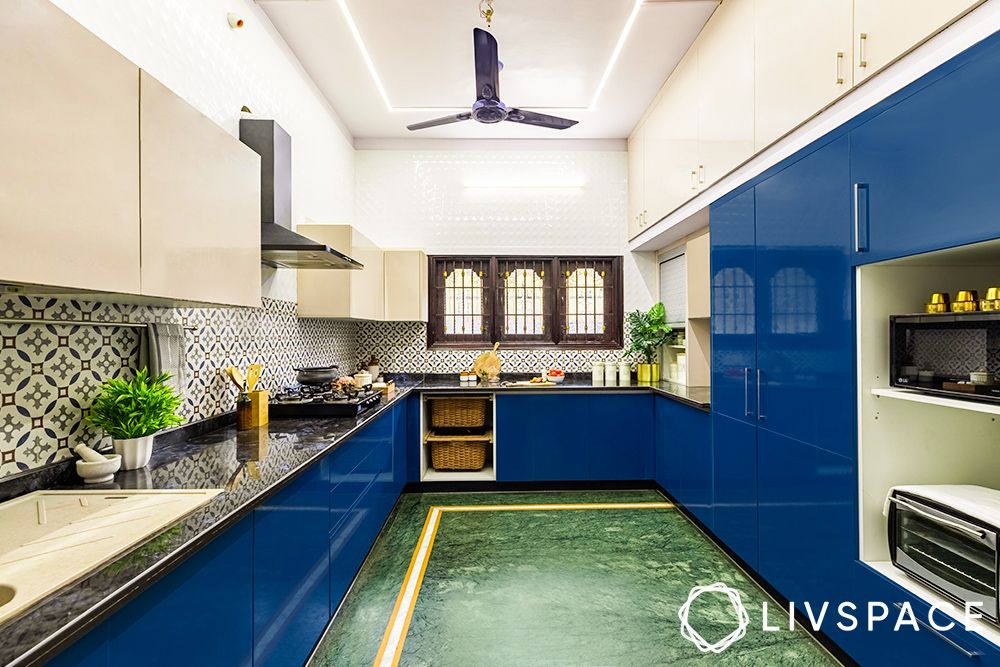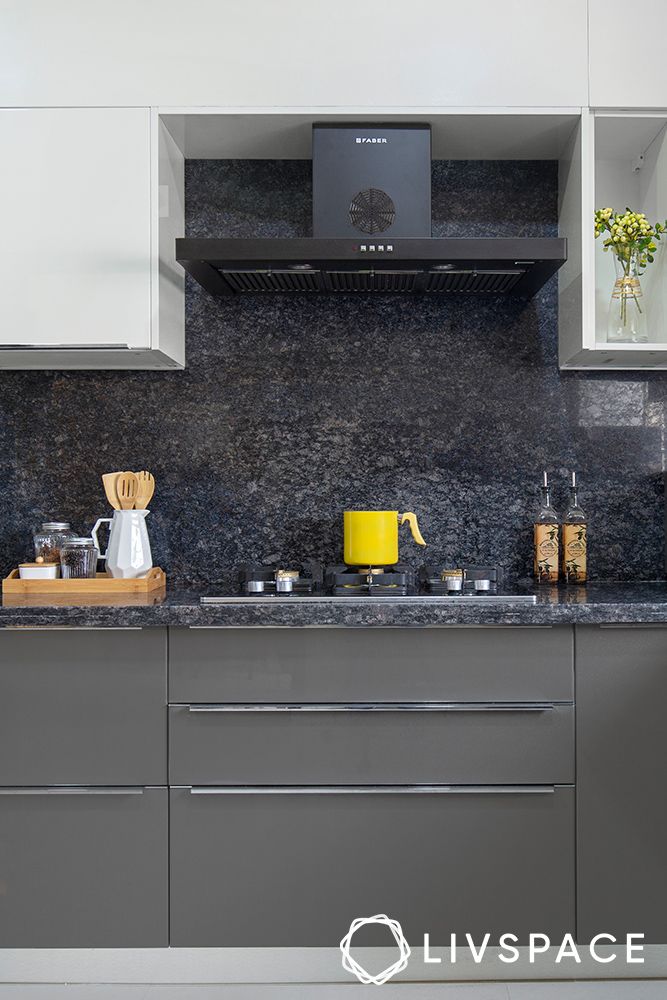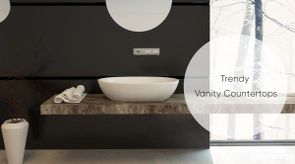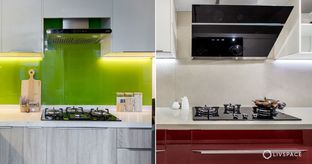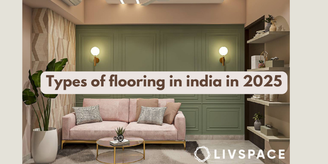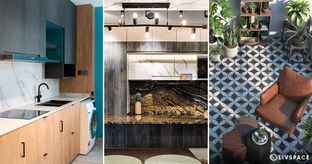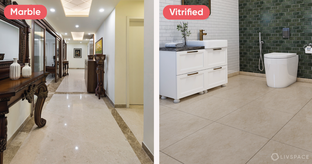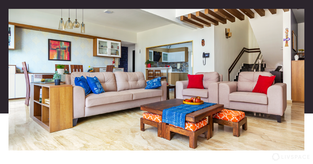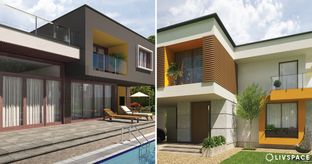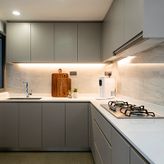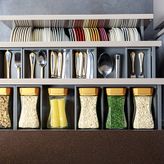In This Article
- What’s the Difference Between Marble and Granite?
- Marble vs Granite Uses: What to Use Where?
- 1. Flooring
- 2. Countertops, Backsplash & Tabletops
- 3. Wall Cladding
- 4. Pooja Rooms
- 5. Bathrooms
- Pros & Cons of Marble
- Pros & Cons of Granite
- Marble vs Granite: The Similarities
- Marble vs Granite: The Battle of the Greats
- How Can Livspace Help You?
When it comes to building materials, marble and granite are both very popular surfacing materials. But that doesn’t stop the debate on marble vs granite from resurfacing every couple of days. After all, why should it not? Being naturally available stones that are available in affordable ranges, both marble and granite are great for interiors. But then, what must you choose?
Hence, to put an end to this debate, we at Livspace, decided to give you a comprehensive insight into both these materials; their differences with regards to strength, durability, cost, availability, and other parameters. Now that you’re here, let’s get you started on the marble and granite difference right away.
What’s the Difference Between Marble and Granite?
Although marble and granite are both widely available stones, there are some crucial differences that set them apart from one another.
Limestone (sedimentary rocks) undergo metamorphosis to produce marble. Whereas, granite is an igneous rock that’s formed deep under the earth when the Magma solidifies and cools down. Now that you know the story of their origin, let’s take a look at what happens when it reaches your homes.
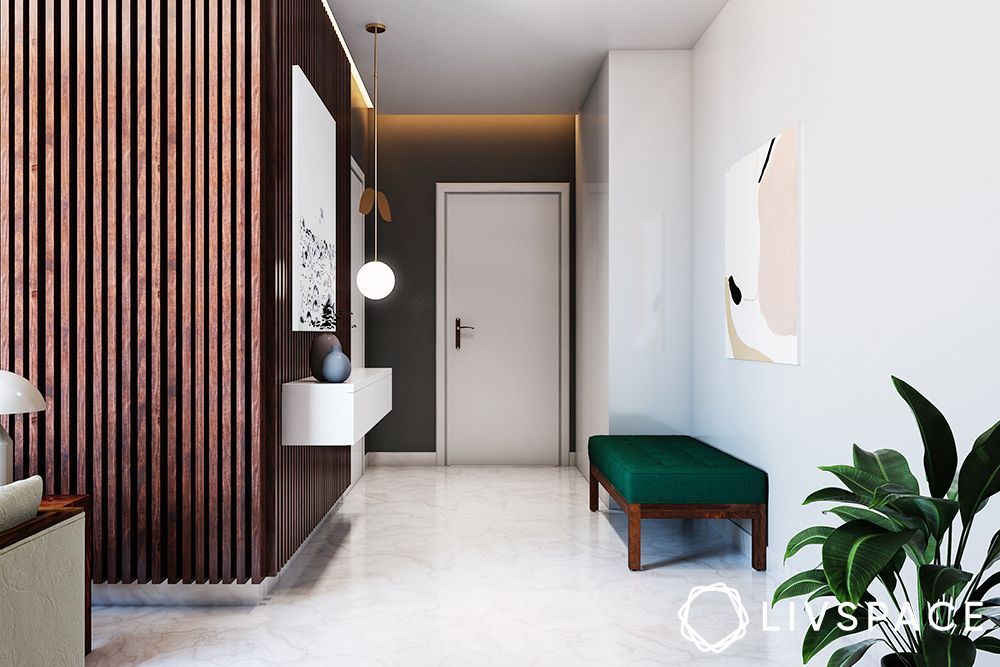
Let’s cut to the chase and check the important differences:
MARBLE VS GRANITE
| Marble | Granite | |
| Durablility | Durable; has a hardness of 3-5 on the Mohs scale | Highly durable; has a hardness of 6-7 on the Mohs scale |
| Acidic Resistance | No; marble is porous, so it’s more prone to etching | Yes; granite has a high density |
| Porous | Yes; it’s a soft metamorphic stone that requires sealing | No; it’s not affected by water, but it’s best to have it sealed |
| Cost | Affordable than granite; some varieties can cost more | Affordable; granite price can be ₹80-₹2200/sq.ft. depending on many factors |
| Damage by Strong Chemical Cleaning Liquids | Strong chemical cleaning liquids can cause damage and discolouration | Strong chemical cleaning liquids can wear away the sealant, and can cause discolouration |
| Stains | Prone to acquiring stains & spills due to high porosity | Not prone to stains; even acidic liquids don’t permeate granite as long as it has a sealant barrier |
| Outdoors | Usage not recommended; but can be used with sealants | Can be used with or without sealants |
| Heat Resistance | Susceptible to heat damage; not recommended for kitchen countertops | Highly heat resistant; ideal for kitchen countertops |
| Scratch Resistance | Prone to getting scratches from common activities like cutting | Very hard stone; naturally scratch resistant |
| Maintenance | Might be better to polish and reseal twice a year | Low maintenance; might require polishing once every few years |
| Appearance | Has veins in a different colour; most popular colours include white, black, green and chocolate; available in light to medium shade | Can have freckles in a variety of colours or veins; every slab of granite is entirely unique and can come in black or solid colours; available in medium to dark shade |
| Properties | Crystalline rock which can get dull over time | Igneous rock which retains its shine |
| Used for | Flooring, pooja rooms, wall cladding, shower walls, vanities, tub decks; Recommended for usage in low footfall areas | Countertops, tabletops, flooring, outdoor landscaping, wall cladding; Recommended most for high footfall areas due to its strength |
| Origin | Metamorphosis of sedimentary rocks | Solidifcation and cooling of Magma |
| Environmentally-Friendly | Can last for many years; but carbon footprint is high for mining, transportation and installation | Can last for many years; but carbon footprint is high for mining, transportation and installation |
| Health Risks | Can emit carbon dioxide when exposed to heat and acidic substances; hence not recommended for kitchen countertops | Considered safe by EPA |
A. Marble vs Granite: Durability
Even though both granite and marble are hard and can last for several years, there’s one vital difference that makes granite better than marble. That is its non-porous quality.
Marble scores 3-5 on the Mohs scale (as it’s a softer sedimentary stone) whereas Granite scores 6-7 on the Mohs scale due to its extreme density.
Marble is porous and can be prone to discolouration, spills, stains and pitting. That’s why marble needs to be polished and sealed before usage. It’s recommended to have marble polished twice a year. However, granite is non-porous and is resistant to stains, spills and does not get discoloured easily.
B. Marble vs Granite: Maintenance
Marble can require resealing and polishing twice a year. Although granite can also warrant some resealing, it tends not to require polishing every year. It’s recommended to have it polished every two years or so.
C. Marble vs Granite: Scratch Resistance
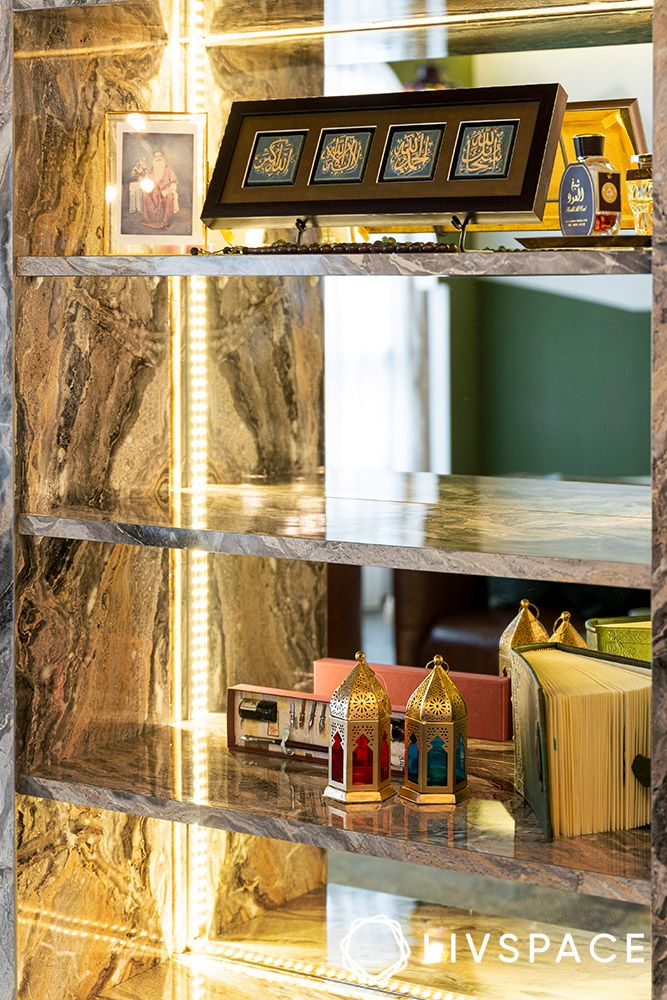
As a softer stone, marble can get scratches easily if there are constant abrasions; however, granite is a very hard stone and usually does not get scratches. Plus, marble can get scratches from common activities like cutting, and hence it is not recommended for kitchen countertops.
D. Marble vs Granite: Heat Resistance
While both marble and granite offer decent resistance to heat, we can say that granite is highly resistant to heat. Marble can be susceptible to heat damage. Even contact with hot pots and pans can damage marble.
That’s why experts prefer granite as the ideal kitchen countertop material.
E. Marble vs Granite: Stain Resistance
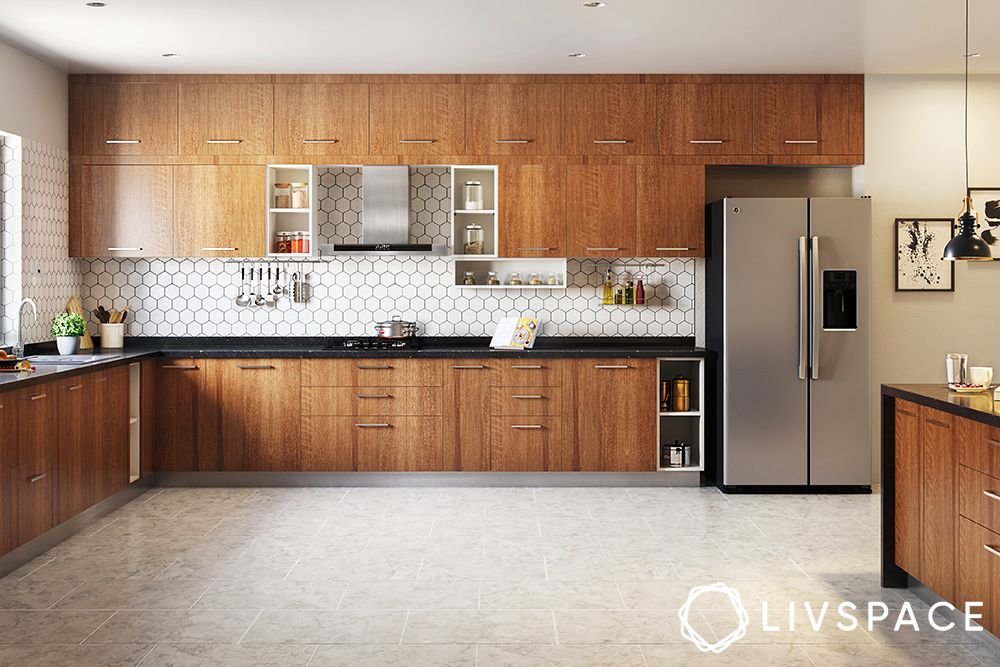
As we know, marble is a soft sedimentary stone that originates as limestone. That’s why it’s porous and tends to absorb water and other materials on contact. That can include oil, wines, juice, curries and vinegar. Hence, marble is prone to staining.
However, granite is entirely stain-resistant because of its hard nature as an igneous rock and extreme density.
F. Marble vs Granite: Cleaning Process & Cleaning Liquids
You can wipe both with a wet cloth and any organic cleaning liquid. It’s best to avoid very strong chemical cleaners. For those of you who love to wipe down surfaces with a bit of vinegar, you might want to avoid that when it comes to marble, as it’s prone to pitting and etching. On contact with acidic liquids, it can emit carbon dioxide, which isn’t good for your health.
When it comes to strong chemical cleaning liquids, you can avoid them for granite and marble, as they can cause damage and scars. It might reduce the shine of the stone.
G. Marble vs Granite: Usability Outdoors
Granite can be used outdoors with or without a sealant. However, marble cannot be used outdoors without a sealant barrier, as it’s porous and tends to absorb water.
Plus, marble is more prone to etching and staining, as it’s a softer stone. Additionally, all natural stones (including granite) can get a little slippery if it’s too wet. While an outdoor granite might do better than marble, it’s best to have it sealed.
H. Marble vs Granite: Appearance
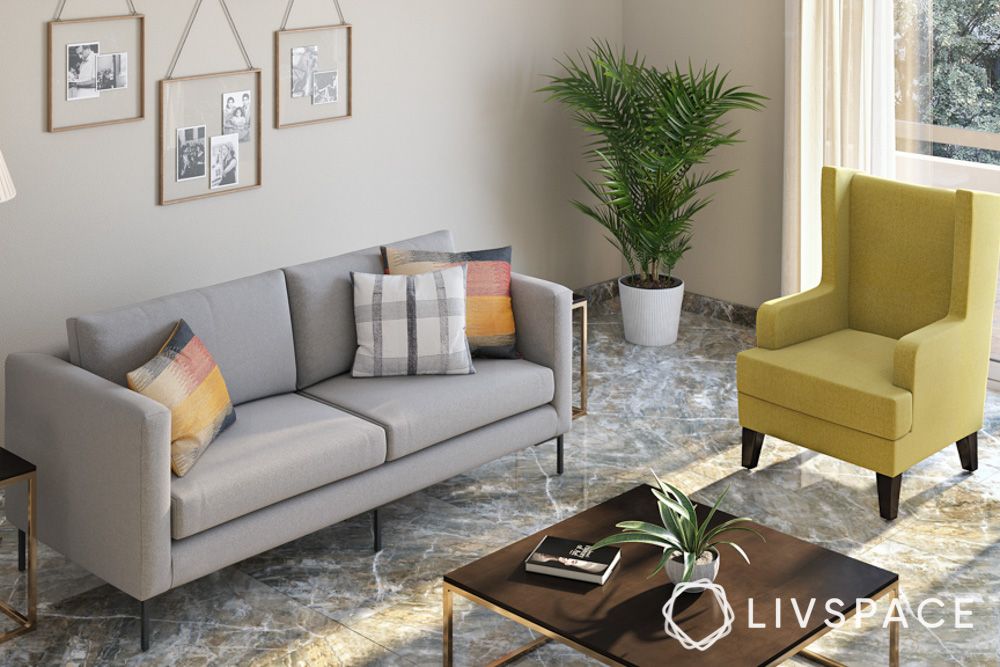
When it comes to appearance, both marble and granite appear the same from a distance. However, on close inspection, you’ll see that marble has marks that are more like veins whereas granite has marks that look like freckles.
White marble is the most popularly available variety. However, it can also be available in brown, green and black. As for granite, it is available in solid colours like black, or it might have colourful freckles and grains in red, green, orange and brown.
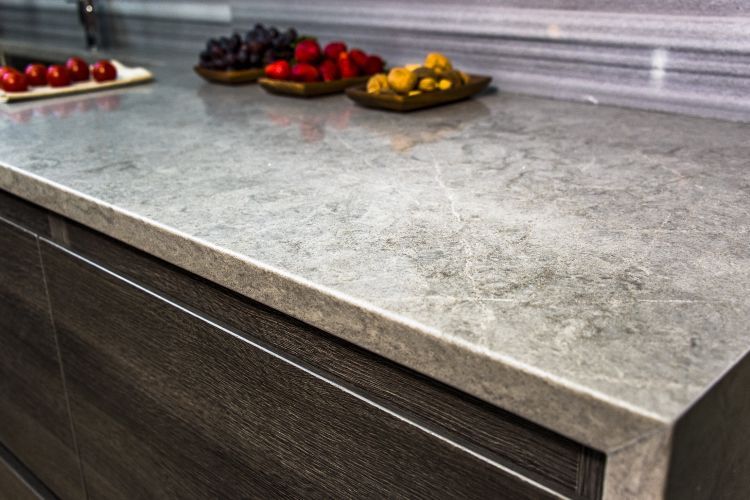
While marble has a light to medium shade, granite has a medium to dark shade.
Also Read: Stone Cladding Walls 101: Everything You Need to Achieve Perfection
I. Marble vs Granite: Price
When it comes to marble vs granite price, several factors come into play. Cost-wise, marble is usually more affordable than granite, but that’s not always the case, as certain varieties of marble can be quite expensive.
Granite is affordable and the cost of granite can vary from ₹80-₹2200/sq. ft. depending on appearance, strength, colours, patterns and availability.
J. Marble vs Granite: Applications & Usage
Marble is recommended for usage in areas with low footfall: bedroom flooring, kitchen flooring, bathroom shower walls, bathroom vanities, pooja rooms, shelves and centre tabletops.
Granite is hard and tougher than marble. It can withstand heat, pressure and exposure to water. Hence, you can use it for your kitchen countertops, flooring options, wall cladding, outdoor landscaping and bathroom countertops.
For a detailed picture of where to use what, see the next section 😉
Marble vs Granite Uses: What to Use Where?
1. Flooring
MARBLE FLOORING
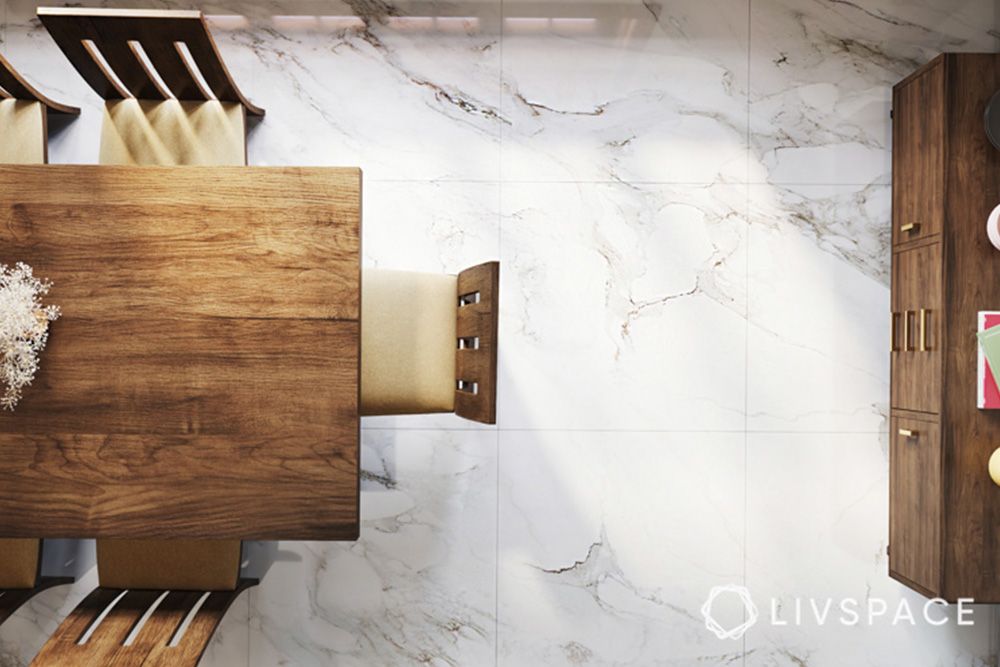
In Indian homes, marble flooring is the more common choice between the two. That’s because we Indians believe that marble gives a luxurious shine to our homes. It’s ideal for use in bedrooms, halls and foyers.
However, it’s recommended that you don’t use marble flooring for your bathrooms, as natural stones can be slippery when wet.
Also Read: 3 Simple Steps That Help You Choose The Best Flooring Option
GRANITE FLOORING

Granite, as one of the most durable natural stones, is often used for flooring, though it can be difficult to source. It’s not porous; it’s resistance to stains, heat and spills. Hence, it makes for a great type of flooring.
It’s also used as an outdoor landscaping surface. However, we recommend that you be careful as natural stones can be slippery if wet.
2. Countertops, Backsplash & Tabletops
MARBLE COUNTERTOPS (NOT RECOMMENDED)
The truth is, marble absorbs water unlike granite. Neither is it resistant to stains. It’s prone to pitting, etching, stains, spills and that doesn’t make it an ideal choice for kitchen countertops. Plus, it’s a softer stone and it’s recommended that you don’t use them as countertops or tabletops.
MARBLE TABLETOPS
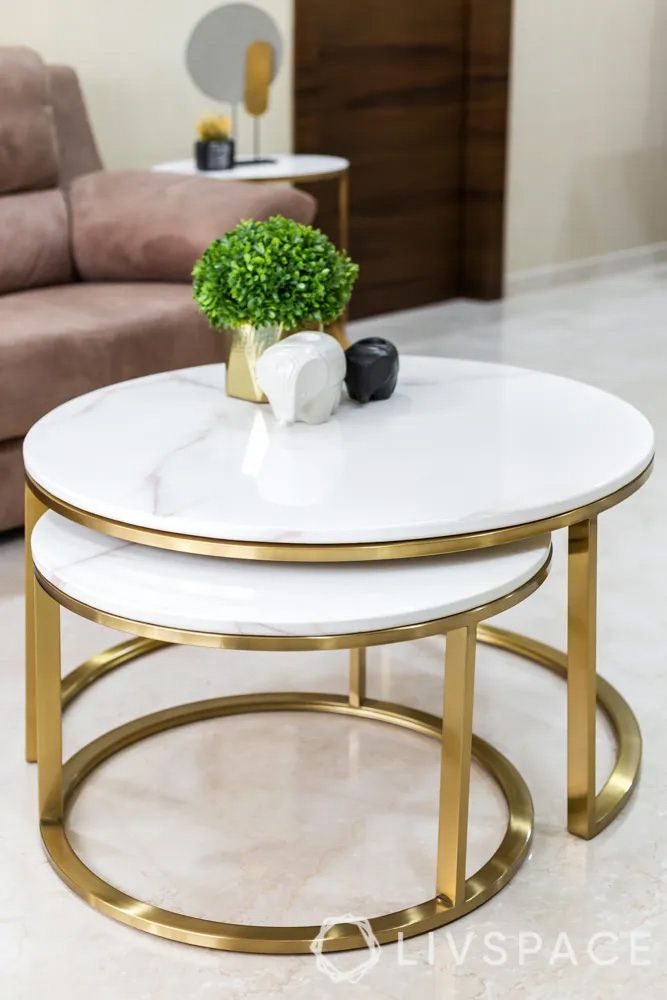
If you’re planning to use marble for a study table, that’s all right. However, you should steer clear of areas that’ll see a lot of water, spills and stains.
GRANITE KITCHEN COUNTERTOPS & BACKSPLASH
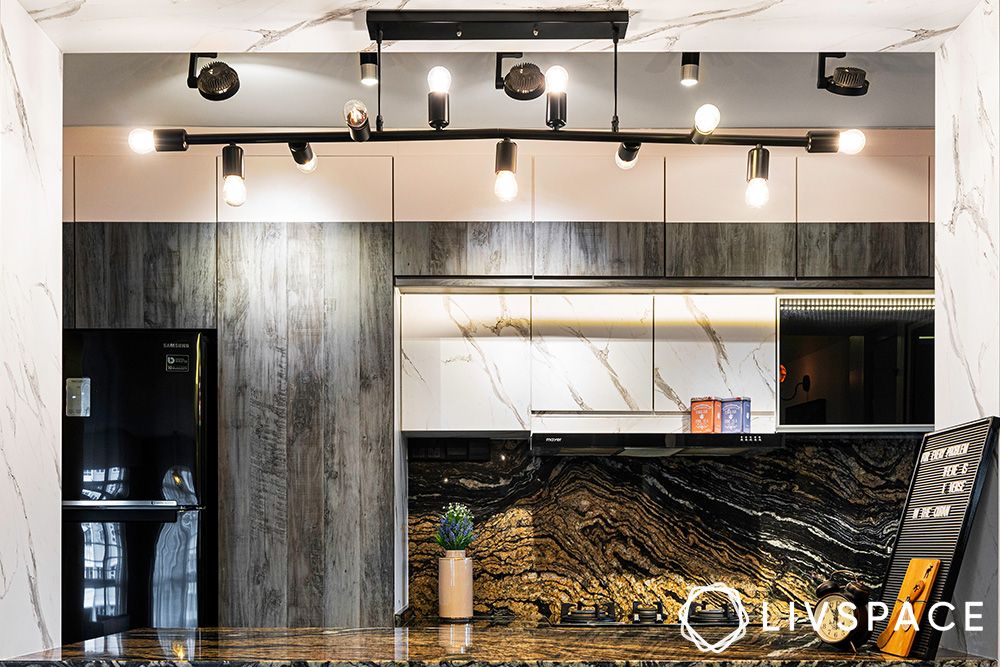
Between the two, granite is a strong, durable natural stone that’s highly resistant to heat. Plus, it doesn’t get discoloured easily and neither is it prone to stains and spills.
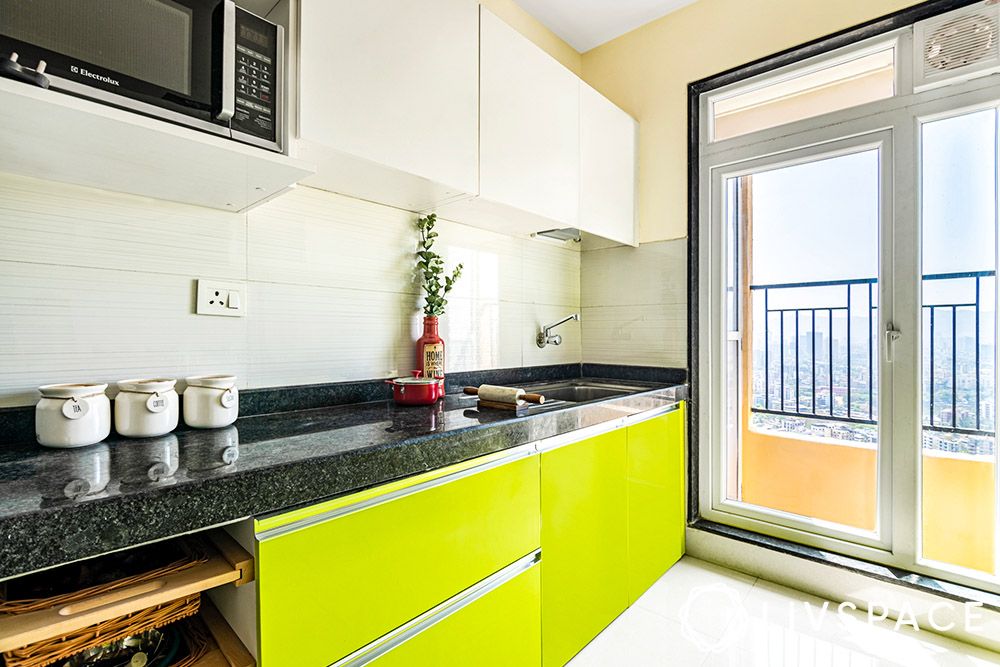
In fact, when it comes to water – granite isn’t porous like marble. All in all, granite is a great material for kitchen countertops and tabletops. So, it’s safe to say that granite is everything marble isn’t.
Also Read: What Is Kalinga Stone? Price, Material, Durability and All You Need to Know
3. Wall Cladding
MARBLE WALL CLADDING
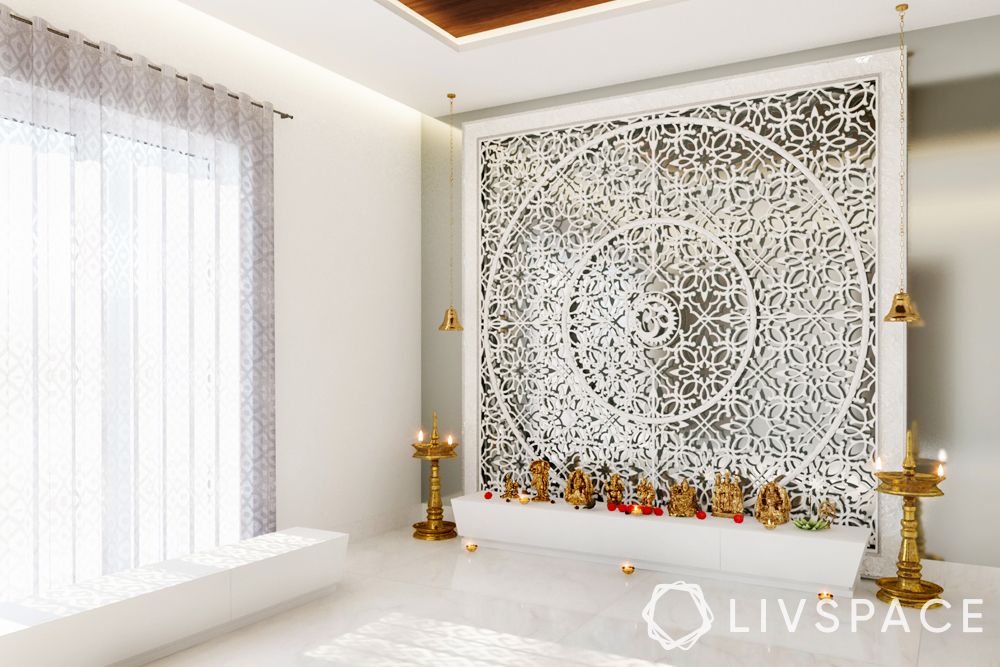
Though marble isn’t ideal as wall cladding to protect the wall from adverse weather conditions, it’s often used to beautify walls. From accent walls to facades, partitions to jaali designs, marble wall cladding is done to add a touch of oomph to spaces.
GRANITE WALL CLADDING
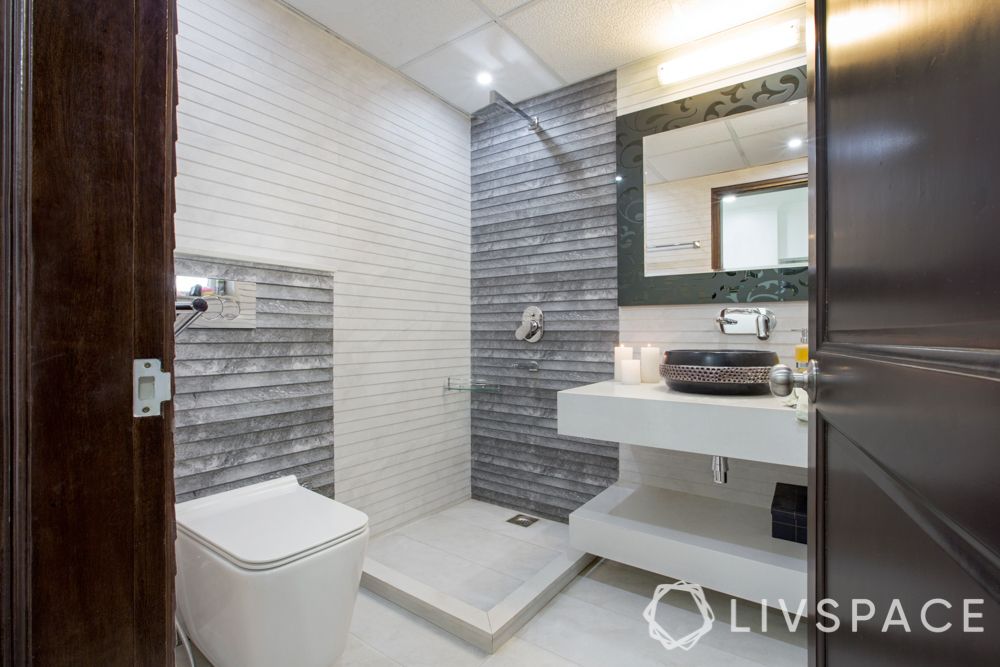
When it comes to granite, it can do very well as wall cladding because of its strength and durability. Though it’s recommended that granite be polished and sealed for usage, it doesn’t require frequent resealing like other natural stones.
4. Pooja Rooms
MARBLE POOJA ROOM
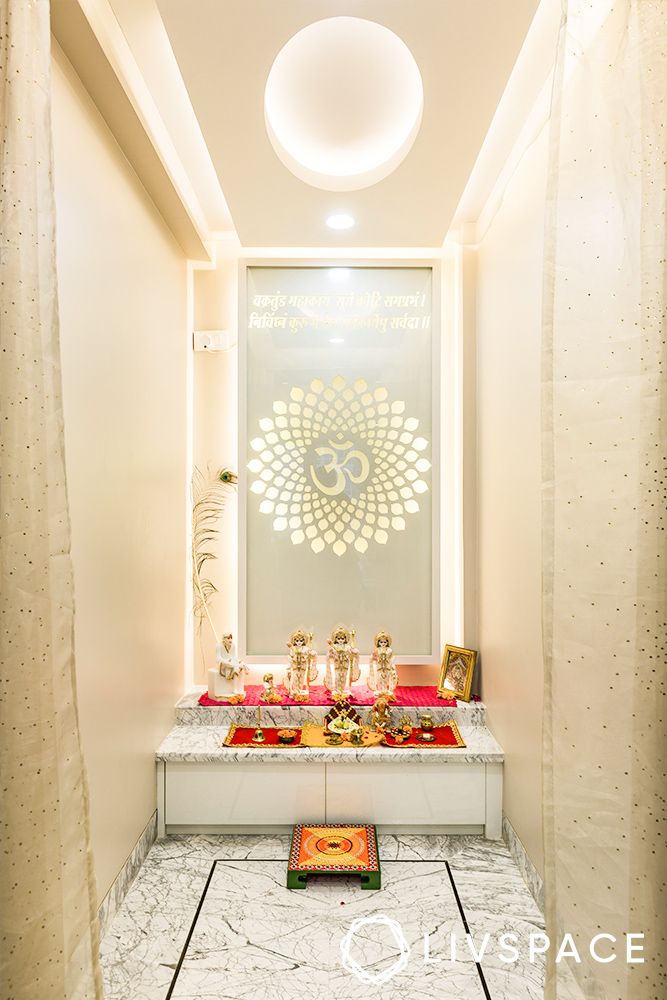
When it comes to pooja rooms, we prefer an interior design that stands for serenity and resplendence. Marble, due to its appearance and lustre, is an ideal material and often finds itself in high demand for installation in pooja rooms.
In fact, in parts of India, marble carved statues of divinities are also quite popular.
GRANITE POOJA ROOMS
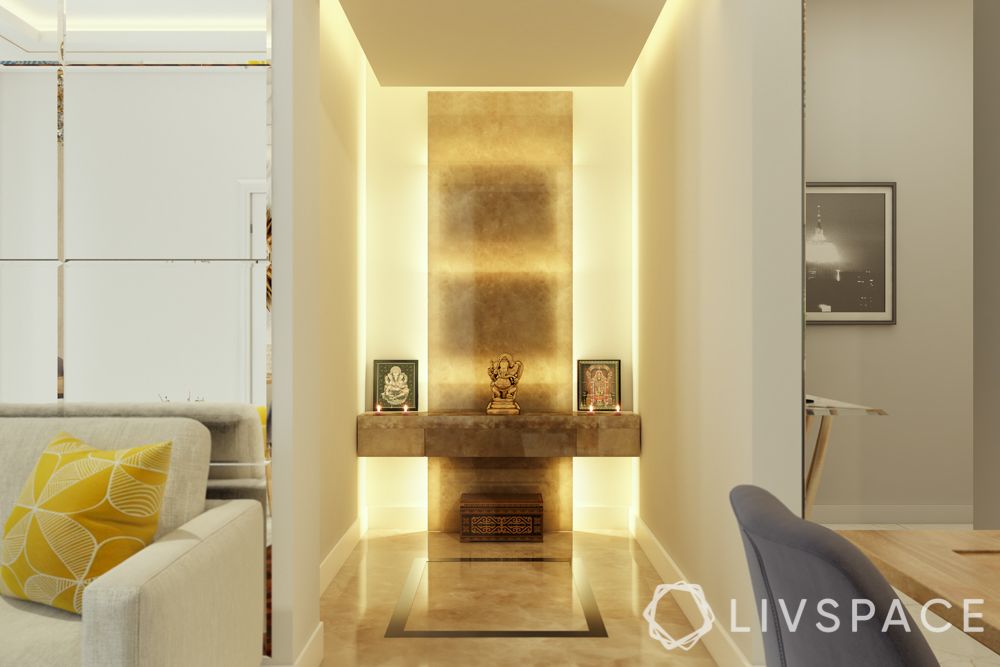
You won’t find a lot of granite pooja rooms; however, that doesn’t stop homeowners from indulging in a rare granite slab for their divinities. As you can see, this pooja room has a granite slab and a granite backdrop, which gives it a warm tone due to its dark colour.
5. Bathrooms
GRANITE BATHROOM COUNTERTOPS
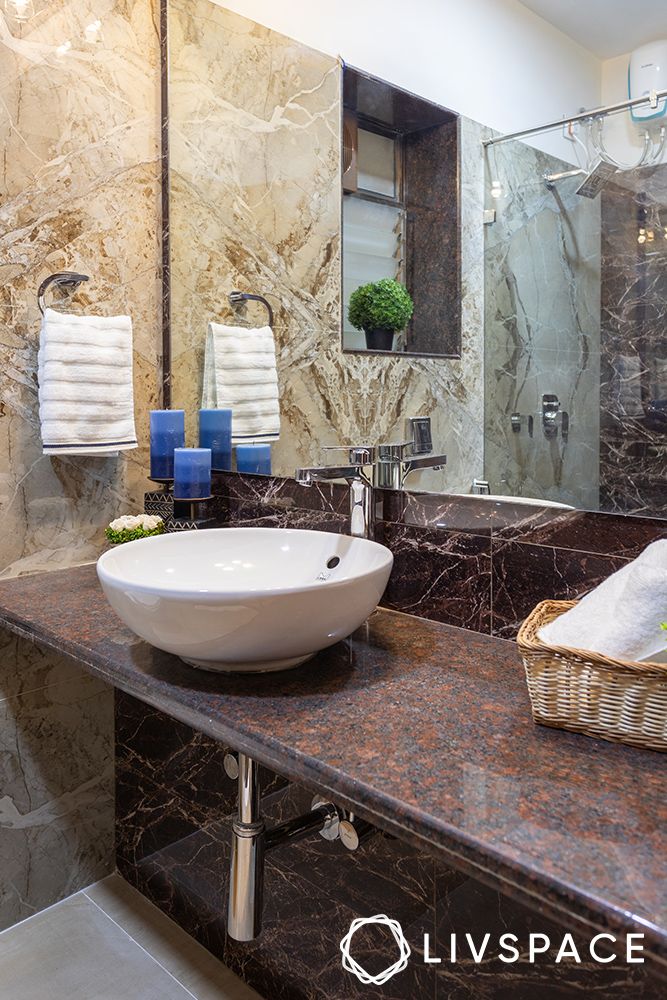
Often times, granite is also used as a bathroom countertop as it doesn’t absorb water easily. Additionally, it’s not prone to discolouration, thereby making it an ideal choice for bathroom countertops.
Also Read: Your Guide to Choosing Bathroom Countertops
GRANITE BATHROOM VANITY
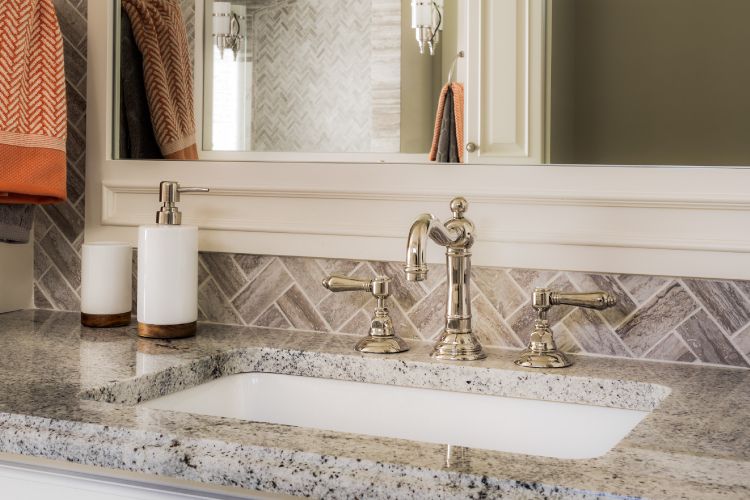
Again, due to its high density and non-porous nature, granite is often used in areas with high-footfall or areas that see a lot of water usage.
MARBLE BATHROOM SHOWER WALLS
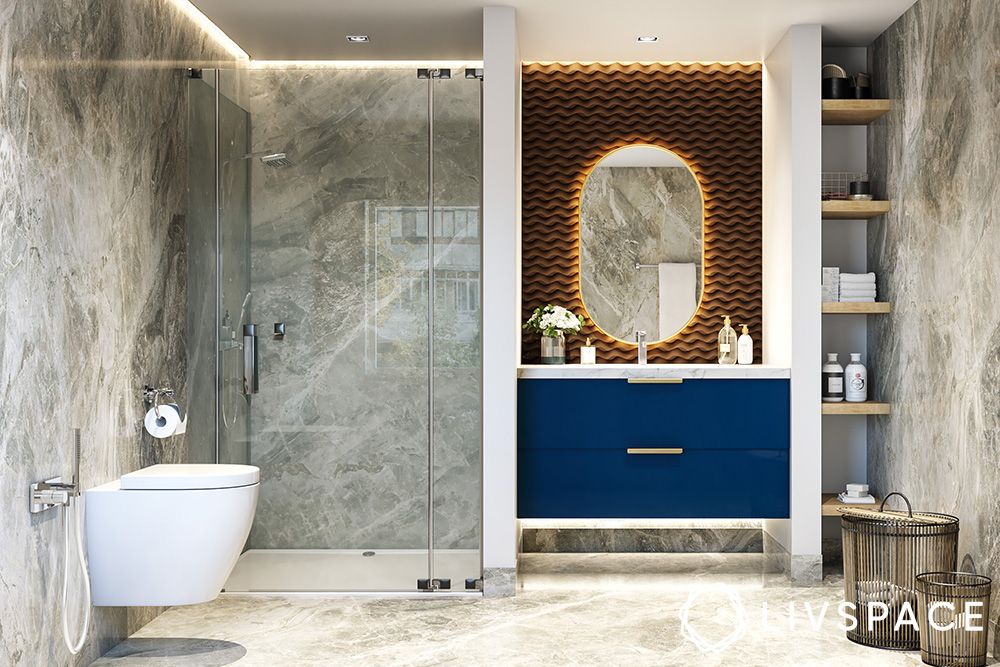
In comparison, marble is recommended for usage in low footfall areas. Hence, you can use it on shower walls, vanities or tub decks in your bathroom.
Pros & Cons of Marble
PROS
- Marble can last very long, if maintained properly
- It is unique and has a rare lustre, that gives it a sophisticated vibe
- Plus, it is a 100% naturally occurring mineral that’s widely available
- Marble is affordable
CONS
- Being a softer stone, marble can be vulnerable to nicks and cracks (if not sealed well)
- Marble can be vulnerable to stains, hence not recommended for usage in kitchen countertops
- Needs frequent sealing
Pros & Cons of Granite
GRANITE PROS
- Granite is great because it’s heat-resistant and durable (ideal kitchen countertop material)
- It’s scratch-resistant with or without a sealant, so it is great for outdoor landscaping as well
- Granite is also naturally stain-resistant. When sealed well, it’s absolutely stain-proof
- Incredibly versatile, safe and non-porous (so no room for moisture or bacteria)
- It’s very durable as well as aesthetically appealing
- Affordable versions are available; though certain varieties can be expensive
CONS
- Dark granite slabs aren’t trending anymore
- Can be susceptible to cracks, if not maintained well
- As granite slabs have to be cut, they will show seams when used in L-shaped and U-shaped kitchen layouts
Marble vs Granite: The Similarities
Marble and granite have many similarities in addition to their popularity. Here are the most important ones:
- Both are natural stones
- They look aesthetically gorgeous
- Both are high versatile
Marble vs Granite: The Battle of the Greats
When it comes to marble vs granite, there’s no clear winner. As granite is naturally heat-resistant, stain-resistant and scratch-resistant, it happens to be the personal favourite of many designers.
Others like marble for its lustre, easy availability and affordability. If you’re looking for the right material, you can choose a mix of granite and marble for your home.
Choose marble for pooja rooms or flooring or shower walls and vanities. Choose granite for kitchen countertops, bathroom countertops, pooja room embellishments, wall cladding, outdoor landscaping and even flooring.
How Can Livspace Help You?
We hope you found our ideas useful! If you want beautiful interiors for your home, then look no further. Book an online consultation with Livspace today. Have any thoughts or suggestions you’d like to share with us? We’re all ears! Drop us a line at editor@livspace.com.
